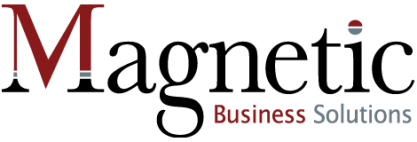How to Keep Your Top Talent

Employee turnover can be expensive, in terms of time and money. Direct costs of advertising, interviewing, and training are only the tip of the iceberg.
Employee retention issues can also result in reduced productivity, lower employee morale, schedule delays and unhappy clients.
An individual may leave an organization for various reasons but when a number of employees leave at the same time, or your turnover rate is upsetting your ability to deliver on your promises, there is clearly a problem.
Here are a few tips on keeping your best talent:
- First things first. A clear job description including a list of expectations is the starting point. That becomes the agenda for your advertising and for the recruiting interviews and performance reviews that follow. The culture of your organization is important for you and the candidate to understand because a good match includes the strengths, weaknesses and personality types of those who will work together inside your business.
- Inspect what you expect. Start with a list of Key Performance Indicators and a simple tracking device for both activity and results. Then adopt or develop a combination of checklists and one or more spreadsheets to make it easier to manage for both of you. Regular feedback is also a key component so there are no surprises come review time.
- Communication matters. Communication is just as important in our business relationships as it is with family and friends. We tend to give most of our attention to those employees who are under-performing, but communication with our more talented workers can be even more valuable. They are the role models for others to look up to. If we don’t acknowledge and reward good performance, our competitors will be happy to do so.
- Create a culture of trust and cooperation. Many employees fear being honest about challenges they are facing at home or in the workplace. Some are also afraid to take chances for fear of reprisal. Culture starts from the top, which is why leadership by example is important. As owners, when we take time to actively listen to our employees, share information, and treat them with the greatest of respect, morale, productivity, and retention improve.
- Encourage work-life balance. Taking time to rejuvenate results in enhanced creativity, improved productivity and higher morale. That means that flexibility and balance are important. When you understand the personal values of your employees, you can better provide opportunities for them to balance their jobs with their personal activities. A good mix of work and free time increases happiness. And happy employees are more likely to champion the companies they work for.
- Separate performance reviews from wage reviews. A performance review should focus on the progress being made by the employee and their need for more challenge, training or other support. Good employees welcome the opportunity to qualify for higher wages or bonuses by making a greater contribution to the company while improving their own knowledge and self-esteem. Targets must be set by mutual agreement. A wage review then is based on their performance toward those agreed-upon goals and the market conditions existing at that time for their specific job descriptions.
Take time to reflect on your own employee retention strategies and commit to the improvements in communication, organizational culture, and work-life balance that can make a positive difference in your own life and the lives of your employees.
For more tips on this subject simply call, text or email me and I’ll be happy to respond in person.







